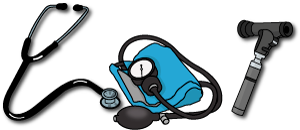Assessment Tools Summary

|
Here are tools a licensed health care professional may use to help assess an mTBI, and tools that should be used only by an expert. |
Who |
Use |
Tool |
Description |
Licensed |
Standard Clinic Assessment Tools |
Initial diagnostic information about vision, coordination, neck pain, balance, and cognitive status. |
|
Athletic Trainer |
Sideline* |
|
Not specific diagnosis, but indication of trouble, including neurocognitive deficits. |
When you need to refer the patient to an EXPERT, here are some of the tested assessment tools that an EXPERT may use. |
Balance & Vestibular |
|
Identification of specific balance or vestibular symptoms. |
Visual |
|
Identification of specific visual symptoms. |
|
Neurologic Status |
|
Tests nerve function through stimulation, movements. |
|
|
Confirms normal neurologic status through strength, sensory, and reflex testing. |
||
Neurocognitive Deficits |
|
Computerized test results. |
|
|
Assessment from neuropsychologist. |
||
* Physician assessment in the sideline often involves a limited set of items with removal to the locker-room or quiet environment for complete SCAT assessment if sideline screening indicates the need. These procedures are usually sanctioned by a governing body. Absent appropriate medical professionals, State laws require removing athletes from play until proper assessment can be completed if a concussion is suspected.
